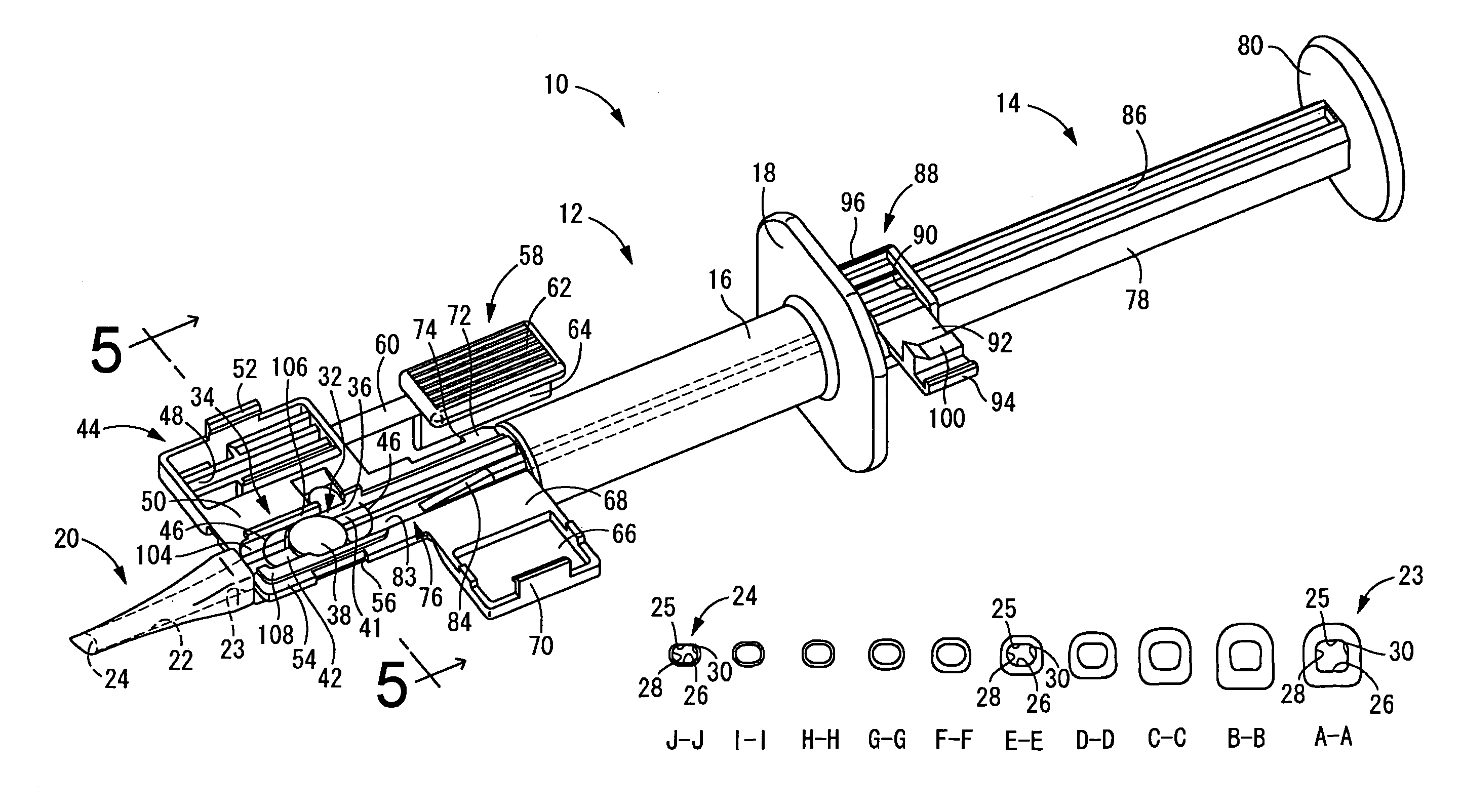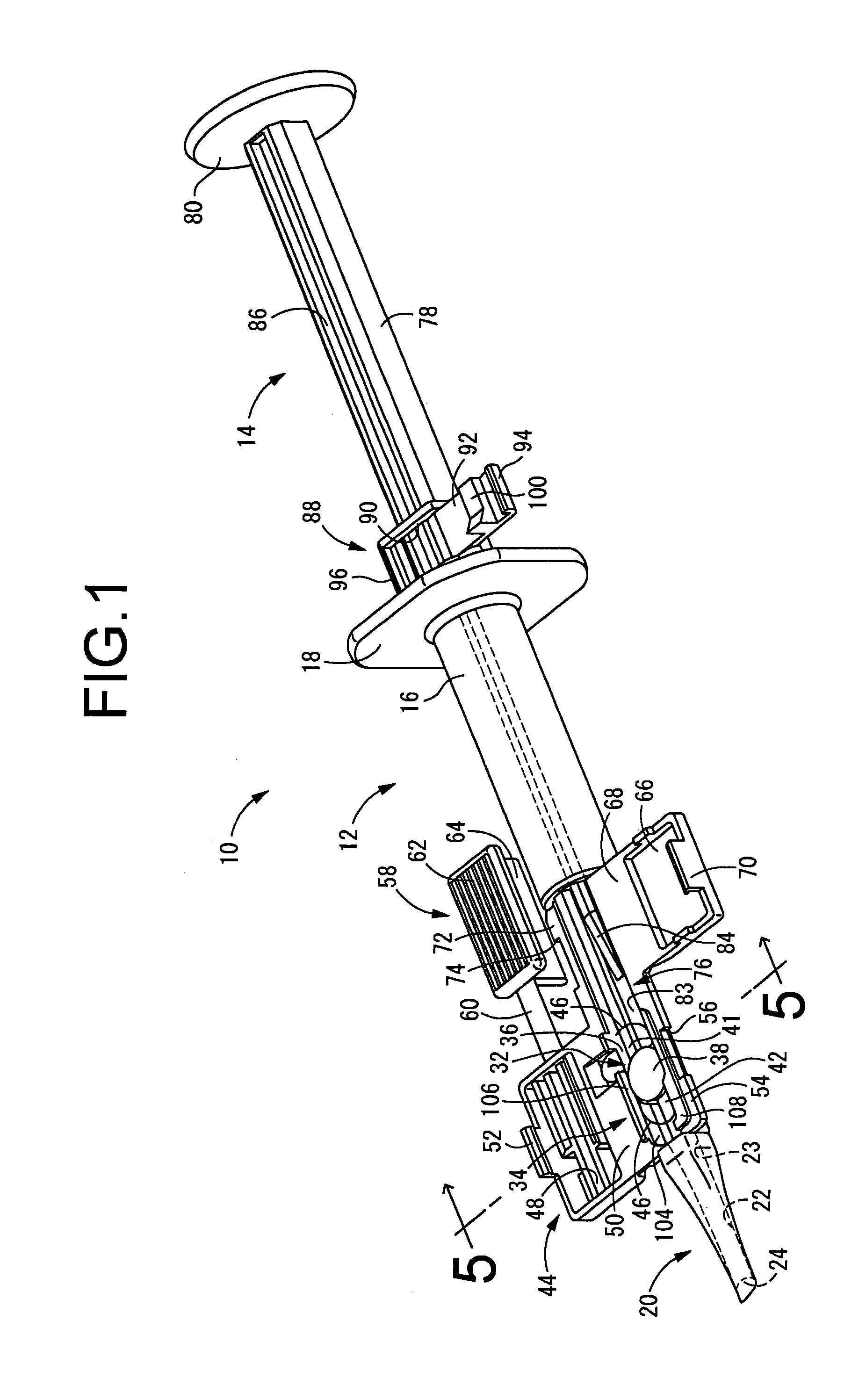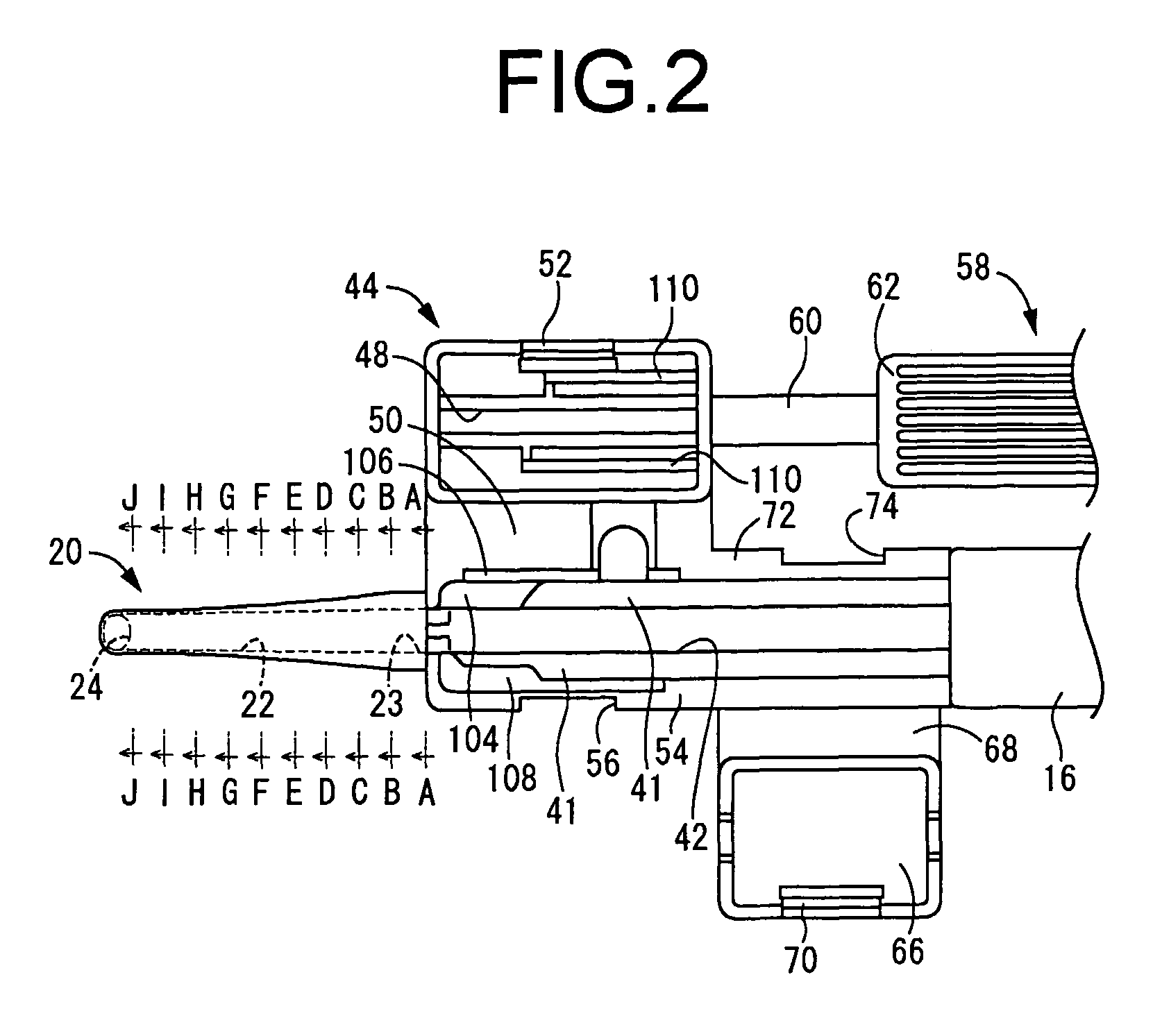Intraocular lens insertion tool
a technology for insertion tools and intraocular lenses, which is applied in the field of intraocular lens insertion tools, can solve the problems of increased insertion resistance of intraocular lenses, increased risk of deformation or damage, and increased risk of bending or deformation of intraocular lenses, etc., and achieves excellent control, easy insertion in the tool body, and steady initial deformation
- Summary
- Abstract
- Description
- Claims
- Application Information
AI Technical Summary
Benefits of technology
Problems solved by technology
Method used
Image
Examples
Embodiment Construction
[0035]In order to provide a more specific understanding of the present invention, preferred embodiments of the invention will be discussed in detail below with reference to the accompanying drawings.
[0036]First, an intraocular lens insertion tool 10 according to a first embodiment of the present invention is depicted in FIG. 1. The insertion tool 10 includes a tool body 12 having generally tubular shape perforated in its interior throughout its entire length and open at the front and back ends, into which inserts a plunger 14. Herein, ‘front’ refers to the direction of extension of the insertion tool 10 (leftward in FIG. 1), and ‘upward’ refers to the upward direction in FIG. 1. ‘Left-right direction’ refers to the left-right direction of the insertion tool 10 in rear view (in FIG. 1, the lower right side is left and the upper left side is right).
[0037]The tool body 12 has a main tubular section 16 of generally round tubular shape, and at the back end of the main tubular section 16 ...
PUM
 Login to View More
Login to View More Abstract
Description
Claims
Application Information
 Login to View More
Login to View More - R&D
- Intellectual Property
- Life Sciences
- Materials
- Tech Scout
- Unparalleled Data Quality
- Higher Quality Content
- 60% Fewer Hallucinations
Browse by: Latest US Patents, China's latest patents, Technical Efficacy Thesaurus, Application Domain, Technology Topic, Popular Technical Reports.
© 2025 PatSnap. All rights reserved.Legal|Privacy policy|Modern Slavery Act Transparency Statement|Sitemap|About US| Contact US: help@patsnap.com



